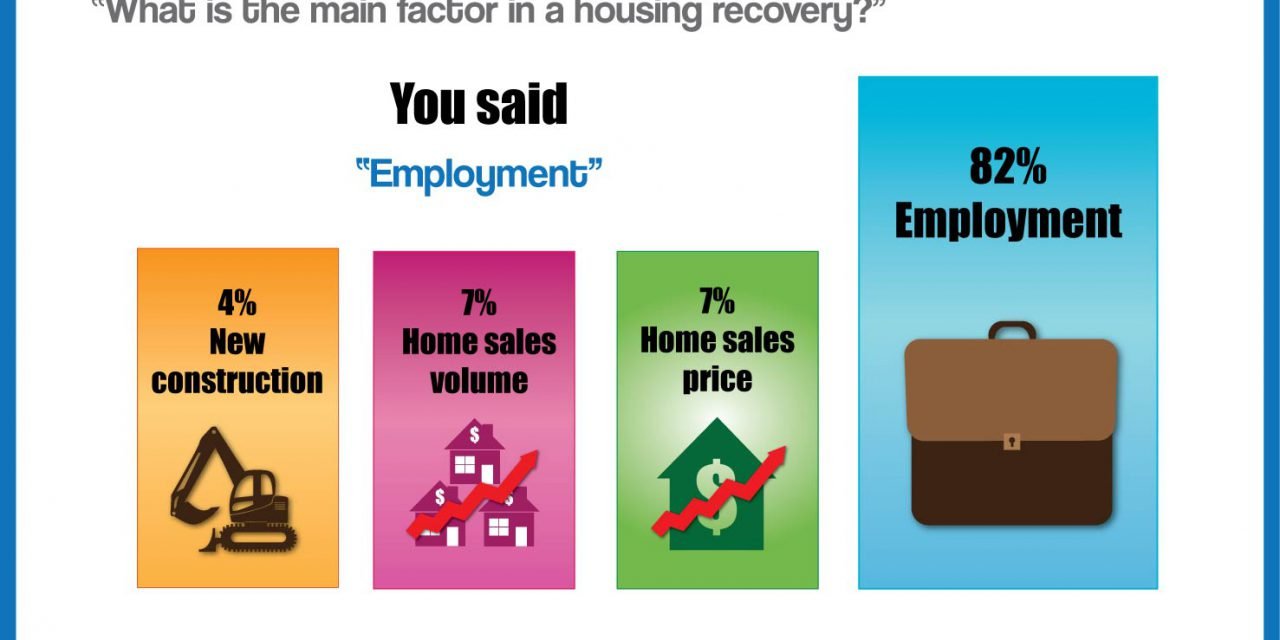We asked our readers what they believe creates a true, sustainable housing recovery. A staggering majority, 82%, agreed it is jobs.
Our poll closed just as the Bureau of Labor Statistics (BLS) released its much-anticipated November jobs report. The U.S. economy added 203,000 jobs in November, bringing the unemployment rate to a five-year low of 7%.
So is the housing recovery upon us? Perhaps not.
While this is indubitably good news, let’s take a closer look at the data before getting overwhelmed with exuberance. When considering the unemployment rate, one always needs to keep in mind the labor force participation rate to get the best picture of employment.
Currently, 63% of Americans are either working or looking for work. Excluding last month, this is the lowest labor force participation rate in over 35 years. Although more unemployed workers found jobs in November than they did in October, it remained the 43rd consecutive month in which more workers dropped out of the labor force than found jobs.
So while there is definitely cause for some optimism, we must keep in mind the gains we are witnessing are not yet part of a consistently rebounding labor market. Secular stagnation is on the lips of the world’s leading economists. This means years of bumpy plateau economic phenomena — one day we’re up, the next we’re down.
Jobs are certainly the number one most important leading indicator of a real estate recovery. Right now, they are mirroring the behavior of real estate markets — schizophrenic, inconsistent and deceiving in appearance.
We cheer falling unemployment. In fact, it’s nothing short of a miracle considering the austerity imposed by our do-nothing Congress.
Data courtesy of the Wall Street Journal


















